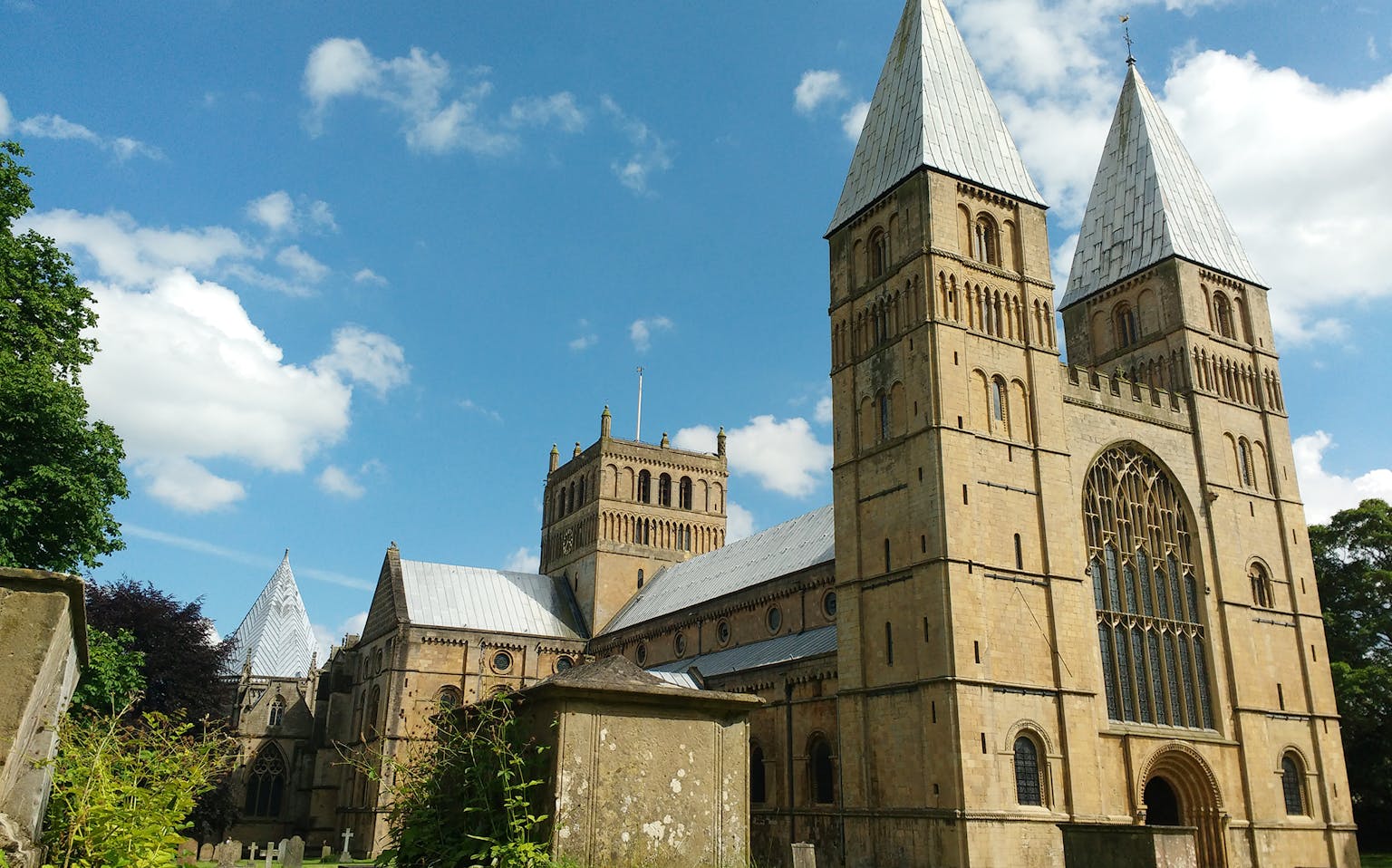Southwell Minster: establishing a heritage-led approach to change

Southwell Minster is Nottinghamshire’s Cathedral and an ecclesiastical site of exceptional interest. Its status as a Grade I listed building and one of England’s 42 Church of England cathedrals brings unique challenges relating to its management and conservation.
Purcell were awarded the commission to produce a conservation plan that for the first time at the cathedral, articulates what is special about the place, establishes a strategy for conserving that significance, and offers a strategy for managing sustainable change.
Understanding who values the cathedral and why
Southwell Minster is one of the finest Romanesque churches in the country, with the continuing contributions of patrons, artists and masons that all add to this exceptional value. Construction of the chapter house in the 1250s brought continental masons to Southwell, who worked on sculptural carvings that have yet to be surpassed.
The ‘Southwell Leaves’ are the finest example of medieval naturalistic stone carvings in the UK, representing a distinct period in the 13th century when naturalistic observations replaced stylised carvings as a form of architectural expression. The biological, zoological and human stone carvings are unparalleled in sculptural delicacy and accuracy to subject matter.
The Southwell Leaves formed the focal point of a multi-million-pound National Lottery Heritage Fund (NLHF) project in 2018/19 and an important outcome of the conservation plan was to understand how the Leaves, and the cathedral as a whole, was valued by the people who interacted with its spaces.
Purcell carried out a consultation process to inform the final issue of the conservation plan, using a variety of formats to capture the perspectives of different audiences. One-to-one meetings with key stakeholders, electronic consultation on draft sections, open workshops, and public presentations were all used to capture understanding.
A key success was the ‘Spirit of Place’ workshops which investigated stakeholders’ perceptions of what is special about the Minster - what is unique and cherished, and why - capturing stakeholders’ understanding of significance and their thoughts on issues and opportunities for the future. This was done through a series of interactive exercises, culminating in groups drafting a Spirit of Place statement for Southwell Minster:
Southwell Minster is perceived as an ancient, sacred place of daily worship centred around a living community of prayer and service, as well as a jewel of medieval Gothic architecture and craftsmanship. It embodies continuity of the past and the determination to travel forwards into the future, to serve the living community and conserve its internationally important Leaves. Extract from the Spirit of Place statement for Southwell Minster.
By engaging with a variety of audiences such as visitors, local residents, staff and volunteers, a stronger picture of what is special can be built up and used to inform heritage-led change in a sensitive way.
Innovation in conservation planning
In order to understand more about the layers of significance associated with the cathedral as both an architectural masterpiece and the spiritual mother church of Nottinghamshire, Purcell also analysed how the cathedral contributed to a series of key themes — archaeological and historical, architectural and artistic, agricultural and scientific, theological and mythological values. The conservation plan is the first time that significance has been articulated for the cathedral as well as the first time all known primary and secondary archival research has been consolidated into a single, comprehensive understanding of the historic development of the site.
The conservation plan also includes a management gazetteer that splits the cathedral into its constituent parts for assessment. Throughout the document, the cathedral is considered within a variety of geospatial layers, leading from the macro — the cathedral, its immediate Archbishops Palace setting and the town itself — through to the micro — the constituent parts including spaces, objects and intangible aspects. The gazetteer provides an understanding of each element proportionate to its significance to aid future decision making.
The informed management of change
The conservation plan will be of use to strategic and operational staff. At both levels, the conservation plan provides a toolkit for decision making; from a set of overarching principles informing change, to measurable actions that are required to support short- and long-term maintenance. Key actions and policies that have been adopted by the cathedral include monitoring of environmental conditions, improved accessibility and a clear decision-making process, embedding best conservation practice into strategic plans and providing standards for the sustainable future.
Principles and policies within the conservation plan offer conservation parameters for change that can be used immediately as part of the recent NLHF project relating to the Leaves of Southwell but can also be used to frame any alterations or development proposal in the future.
The conservation plan has been well received by the cathedral and statutory heritage bodies and in 2019 the cathedral were successful in achieving their delivery phase grant for the Leaves of Southwell project. The conservation plan offers the cathedral an opportunity to engage with, adopt, and implement its policies as a working tool for future decision making at Southwell Minster.

